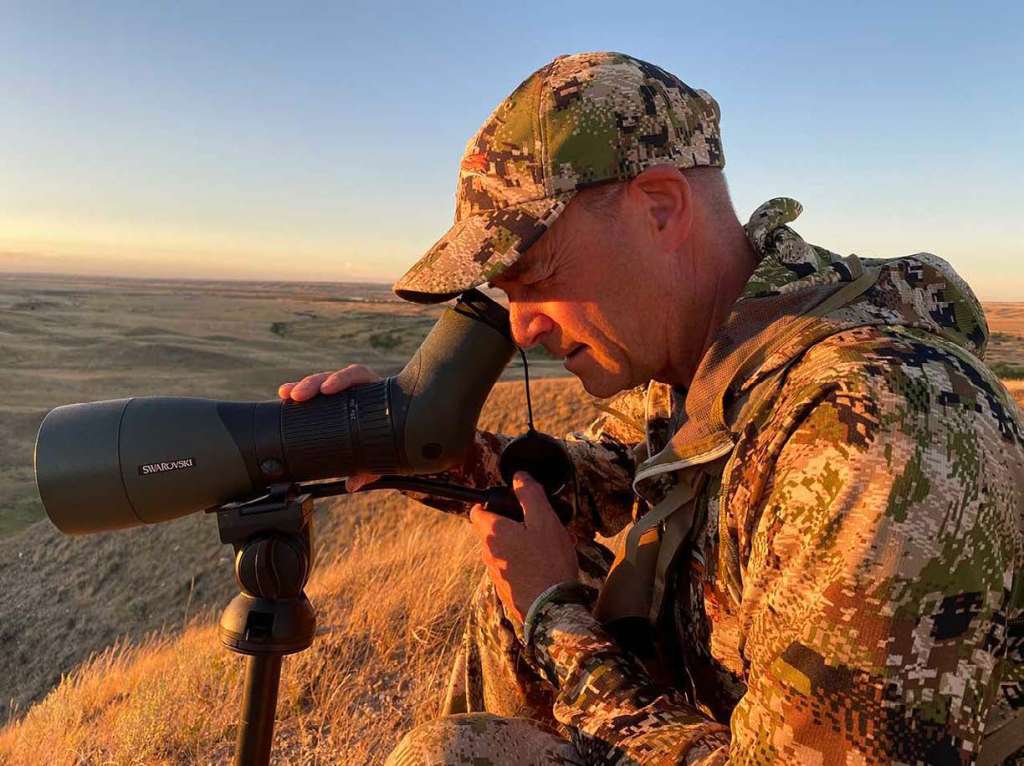It was the second week in September. Archery seasons were in full swing. My wife Heather and I were looking for mule deer in southern Alberta. The area we hunt is mostly farmland laced with a mix of native prairie grasses and coulees. It’s an ideal habitat for mule deer. Walking a ridge and glassing a standing canola field, with an hour of legal light remaining, we located three good bucks. They were a half-mile away and bedded.
We quickly discussed a plan, then it was my turn. If you’ve ever tried moving through standing canola, you know it is dense and loud. Fortunately, there were worn deer trails through the crop, and I was able to follow one of them down a shallow draw in the field. Just over 100 yards away, I was partially exposed, but the bucks were still bedded, with only the tips of their antlers visible.
Carefully easing through the crop, I found a bare patch of soil that offered a bit more room to move. Slowly peaking, I ranged the closest at 62 yards. I practice out to 90 yards, and generally limit myself to 65. My Hoyt is fully capable of making that shot with precision, but there would be no room for human error.
Minutes later came the furthest and largest buck. He stood 92 yards away. As tempting as the situation was, I knew he wasn’t an ethical option. Then came the second. I ranged him at 74 yards; still not an option. I knew the third would soon follow, so I dropped to my knees and dialed in my adjustable sight. I drew my bow, raised up and settled on his antlers, precisely where I thought his chest would be when he stood. Literally a few seconds later, he stood up. With my pin locked on his chest, I sent my FMJ on its way. There was a single hop followed by a short 40-yard dash, then he disappeared. A great stalk had paid off with a perfect heart shot. My deer was down with 15 minutes of legal light remaining.
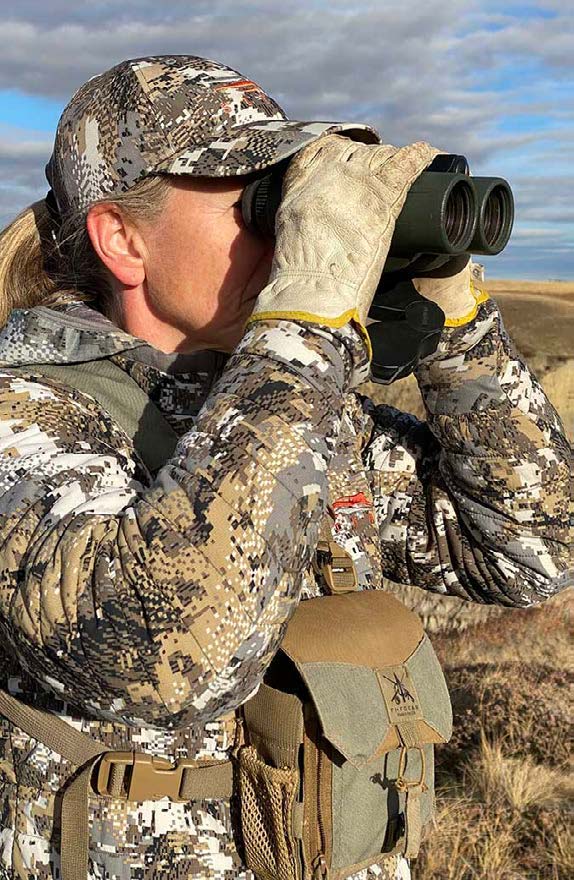
MADE FOR SPOT AND STALK
Mule deer are made for spot and stalk hunting. Whether you’re hunting them in the mountains, agricultural areas, prairie grasslands or coulees, the same tenets hold true. Where they live, how they move, their defense mechanisms and more make them a challenging and wildly fun animal to hunt.
So, here are eight tips—a roadmap, if you will—to successful spot-and-stalk mule deer hunting.
TIP #1: START EARLY
Big, mature muley bucks are seldom caught flatfooted during daylight hours. Aside from those frantic peak rut days at the end of November—when even the biggest of the big throw caution to the wind—mature mule deer have the uncanny ability to vanish during daylight hours.
Mostly nocturnal in their movement the rest of the fall, they commonly travel at first and last light. Tucked away in what they perceive to be safe-haven bedding areas, long before sunrise, most will be well on their way to hide for the day. Similarly, as light fades at the end of the day, their visible movement is similarly limited.
Over the years, I’ve learned to slip into key areas about an hour before legal light, settle in, and sit still as the world comes alive in the morning, or conversely, an hour before sunset.
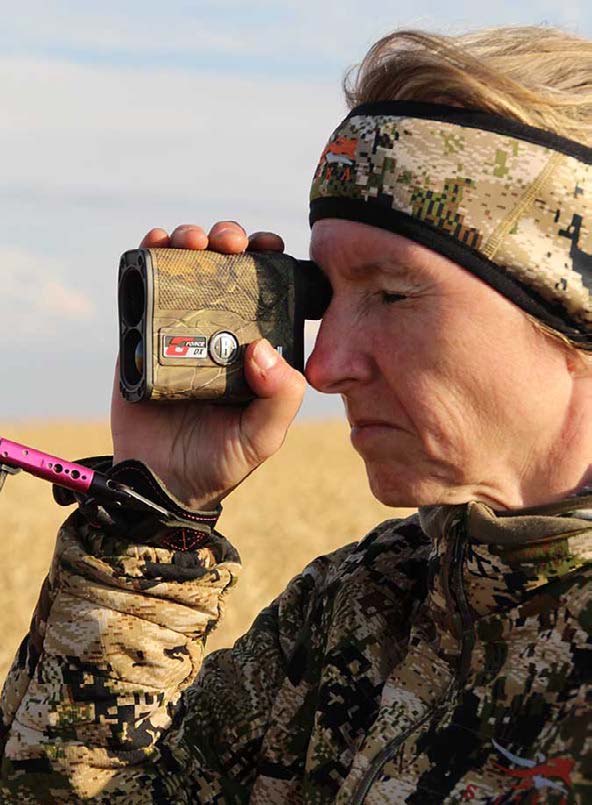
TIP #2: GLASS FROM HIGH GROUND
Savvy hunters recognize the importance of getting to a vantage point where they can watch and see where that deer is going to disappear for the day. Whenever possible, use elevation to gain a visual advantage. Employ the best optics you can and spend time observing and scouring available cover. I was recently on a spot-and-stalk rifle hunt, and this exact strategy paid off.
It’s important to acknowledge a mule deer’s defense mechanisms. They commonly live in open country. Their eyesight is acute, and their hearing is amazing. If you find high ground to glass from, be sure not to skyline yourself. Wear suitable camouflage and do your best to blend in with your surroundings. Use any available cover like rocks, sage, trees, or ledges to conceal your position. A big old buck is astute, and he knows when something is out of place. Equally important is limiting your movement as much as possible. Your goal is to spot a target deer and watch to see either where he’s moving or where he lays down.
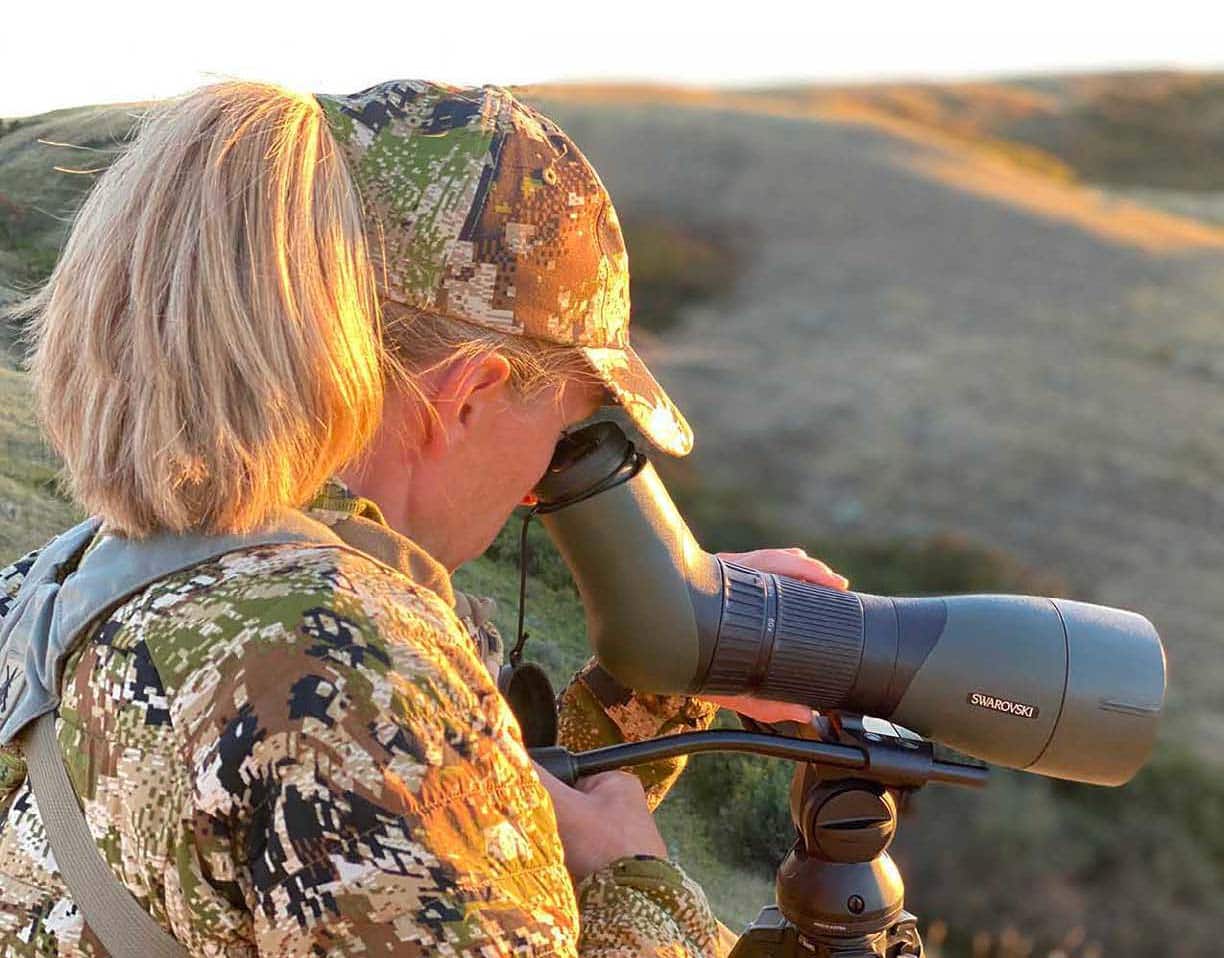
TIP #3: INTERCEPT OR PUT TO BED
As a spot-and-stalk hunter, you ultimately want to intercept your target deer moving through an area where you might get a shot, or else you want to watch him bed down so you can sneak in on him.
Your goal is to get a relaxed shot opportunity. Mule deer will commonly live in a general area as long as they aren’t bothered. Somewhat nomadic, they do move about within that area. Big mule deer bucks, in particular, will often return to the same cover day after day as long as they feel safe. I’ve seen giant mule deer repeatedly bed in the tiniest little clumps of scrub brush on extreme slopes because nothing ever threatens them there. Once you’ve located a good ambush location, or even better, put a buck to bed, this is when the fun really starts, and your attention to detail matters.
Remember, things usually look very different from up high as compared to eye level. Pay close attention to the little things. Note landmarks or physical features in the landscape that will help confirm precisely where you need to be to get a shot. Identify trees, rocks, ledges, draws, or other features that you can use as a reference.
In my experience though, you often just see antler tips or a head sticking above the grass or scrub. From hundreds of yards away, it can be difficult to understand what you’ll be dealing with close to your target. So, it’s imperative to not only note the general area but pay very close attention to precisely where you need to move in to execute a successful stalk.
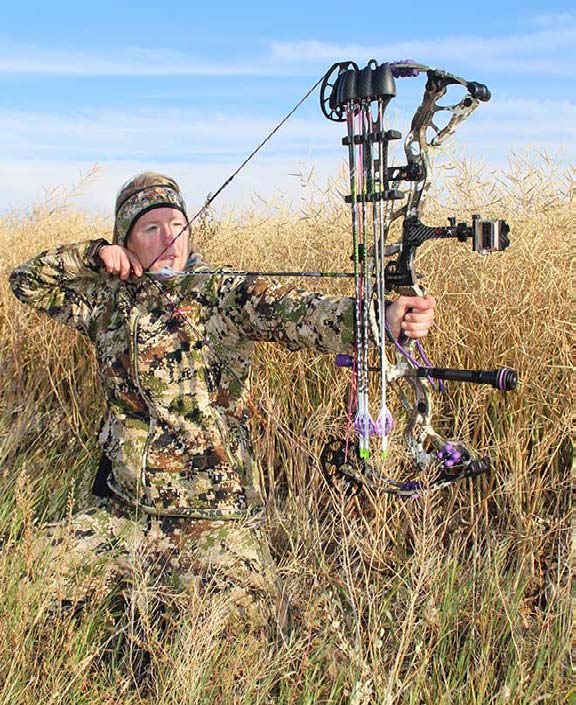
further
TIP 4: MIND THE WIND
There are plenty of things to consider when sneaking in on a mule deer, but wind is the most important factor. Ideally, you want to approach from downwind, but that’s not always possible. A crosswind can work as well, but the bottom line is you should do your best to avoid any situation where the buck will catch your scent. When there is little wind at all, pay close attention to thermals in the early morning and late evening.
A couple of years ago, I did a stalk on several nice bucks. Inside 80 yards, I took off my hiking boots and proceeded in my socks. There was no wind and I needed to eliminate as much sound as possible. Managing to get within 40 yards, I waited for close to an hour. Mule deer will often get up and stretch every few hours, eat a bit, then bed back down. They did, and everything happened perfectly. I was able to draw my bow without them seeing me. But as I did, I noticed an absolute giant stood up at the same time another 100 yards behind them.
Long story short, I waited, backed out, and went after the bigger one. Slipping in to within 30 yards of him, I sat in blistering heat for another two hours. Unfortunately, and rather suddenly, I felt a subtle wisp of wind on my neck. Instantly, a small buck stood from the buckbrush 18 yards away! The wind got me on that one because the giant buck sprang to his feet and bolted!
TIP #5: USE THE TERRAIN
Even on the most level ground, there are usually undulations in the landscape. Take care to use every dip, roll, or other topographic feature to your favor. Remain completely out of sight as much as possible. If it means belly-crawling, do what it takes.
I did a stalk several years ago that lasted six hours. All I had for cover was the odd low-lying sage bush and lots of tumbleweed. I spent the majority of those hours sliding along the ground flat on my stomach. For my uncomfortable efforts, I was rewarded with a shot, and I was able to tag a fine buck.
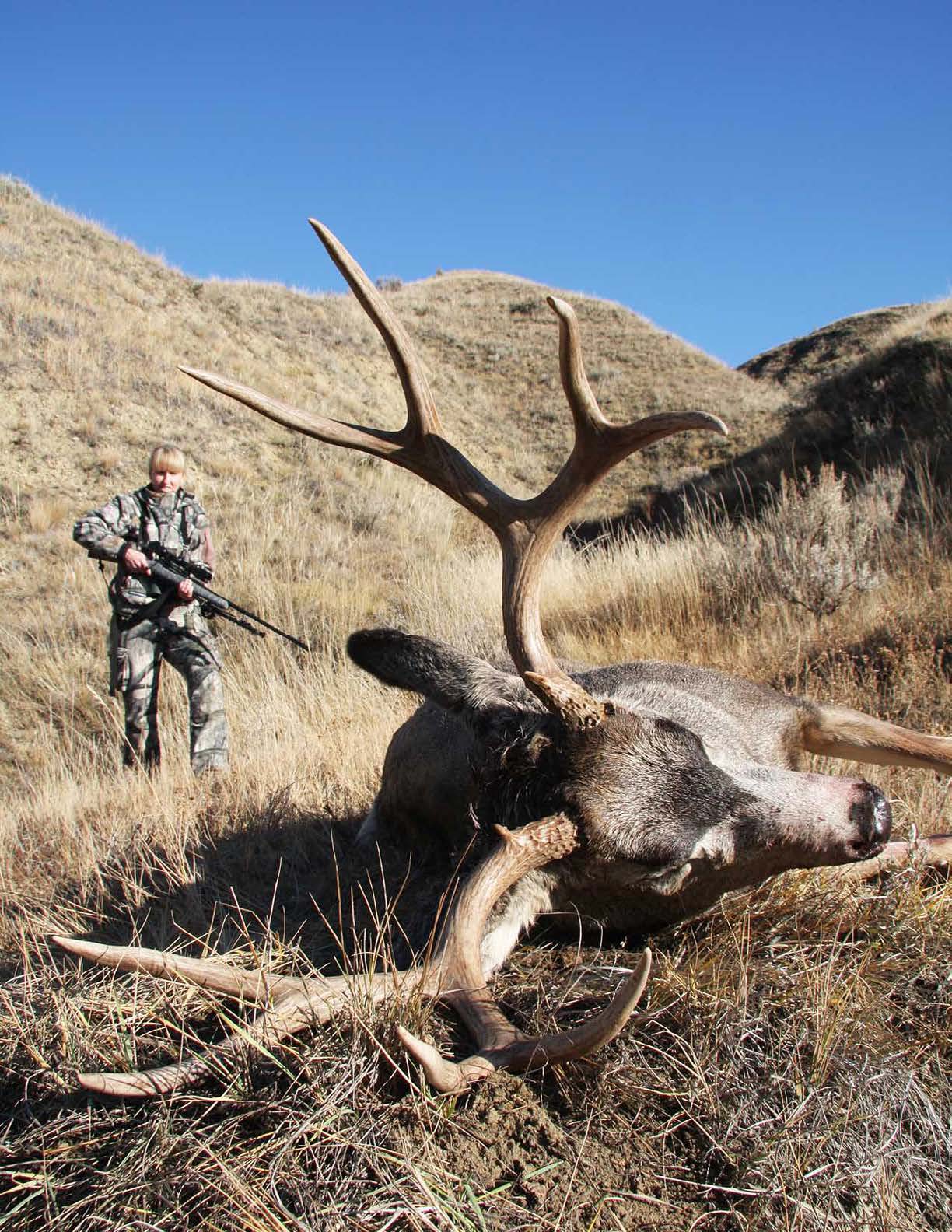
TIP #6: PATIENCE REQUIRED
Without question, this is the most important aspect of spot-and-stalk mule deer hunting. Patience and strategy are the name of the game. In fact, patience—or lack thereof—will most often make or break your hunt. Every year I speak with spot-and-stalk bowhunters who express frustration over their inability to get a shot at a mule deer. They can find them. They can put them to bed. They can even get within bow range, but they invariably say the buck exploded from cover and ran away. Most often, I learn that they were impatient. After a half-hour or so of waiting, they figured they’d try whistling, throwing a stone beyond the deer or doing something else to try to get the buck to stand. Trust me, most often this doesn’t work. It can, but usually, it doesn’t.
Over the last three decades, Heather and I have made just about every mistake imaginable when it comes to spot-and-stalk mule deer hunting. And, like every hunter, we’ll continue to learn from our mistakes. The one thing I can tell you is that you’ll almost always be better off letting the deer stand in its own time. I remember watching Heather sneak a big mule deer that was feeding in standing canola. She got within 50 yards when the buck bedded. After waiting almost five hours, the buck finally stood and resumed feeding. Ultimately, he moved another 100 yards, and she shifted with him to get a 30-yard archery shot. For her patience, not to mention her ability to read the terrain and use the wind, she was able to collect a great velvet-antlered buck.
TIP #7: USE A RANGEFINDER
Whether you’re bowhunting or gun hunting, knowing the distance to your target animal is vitally important.
Today’s rangefinders are affordable, and most are remarkably accurate. For rifle hunting, when shooting distances can be greater, I have a Swarovski EL Range. For bowhunting, I like to use a Bushnell Laser Rangefinder. A rangefinder helps you determine initial as well as progressive distances to your target animal.
Once you’ve stalked to as close as you think you can get, a laser rangefinder can be used to confirm shot distance.
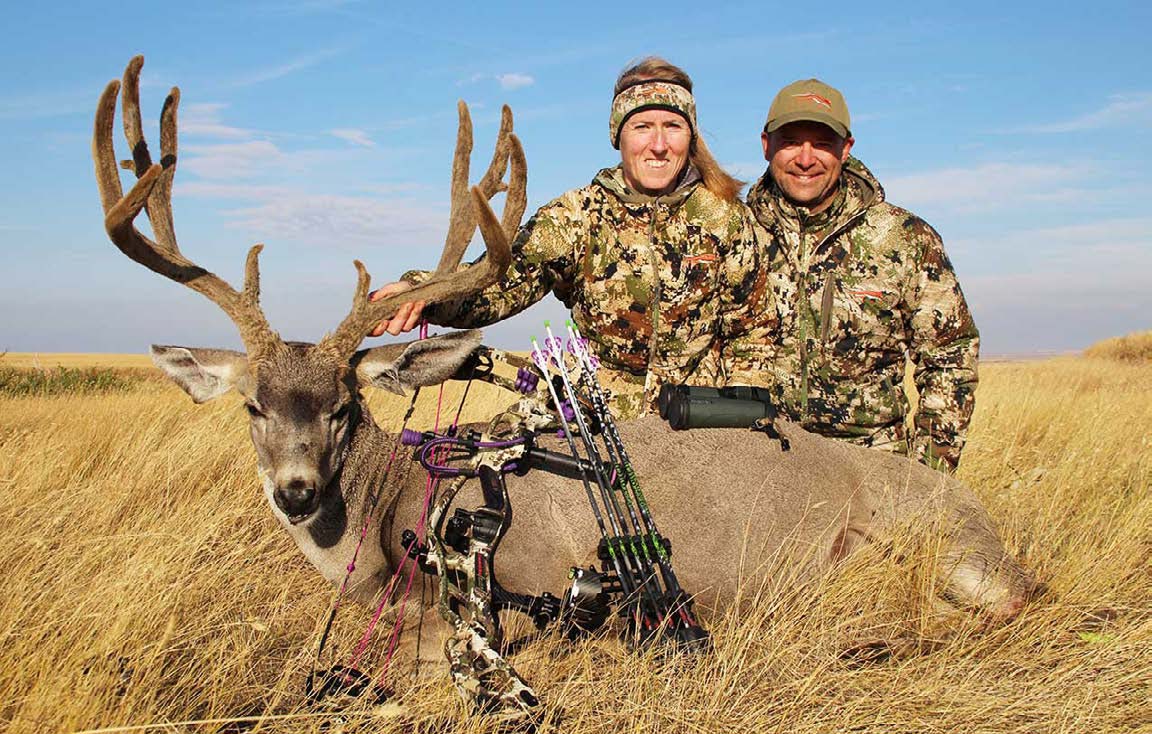
TIP #8: KNOW WHEN TO DRAW AND SHOOT
Plenty of variables can affect the posture of the deer. In almost all archery situations, you’re better off waiting for the buck to stand. Their vitals are compressed and sometimes protected by shoulder bones when they’re laying down.
The best-case scenario is that the buck doesn’t know you’re there. If you’re ambushing, he may walk by you unaware of your presence. If he’s getting up from his bed, he’ll rise up, stretch, turn and face away and expose his vitals for a shot opportunity. But that’s only if all goes perfectly. I’ve been on many stalks where the buck stands, faces directly toward me, then begins to feed straight at me. This is where a cool head needs to prevail. With a bow, remember broadheads kill by hemorrhaging vitals, so always wait for either the broadside or quartering-away shot opportunity. That best crossbow broadhead has to penetrate vitals. The same holds true for rifle hunting, but because a proper bullet kills through the combined effects of hemorrhaging and shock, there is a bit more leeway there. A solid mid-shoulder hit should collapse a big buck in his tracks.
Regardless of where you hunt mule deer, keep these tips in mind. If you exercise extreme patience, get in close and choose your shot opportunity wisely, chances are you’ll be filling the freezer in no time.
Per our affiliate disclosure, we may earn revenue from the products available on this page. To learn more about how we test gear, click here.



